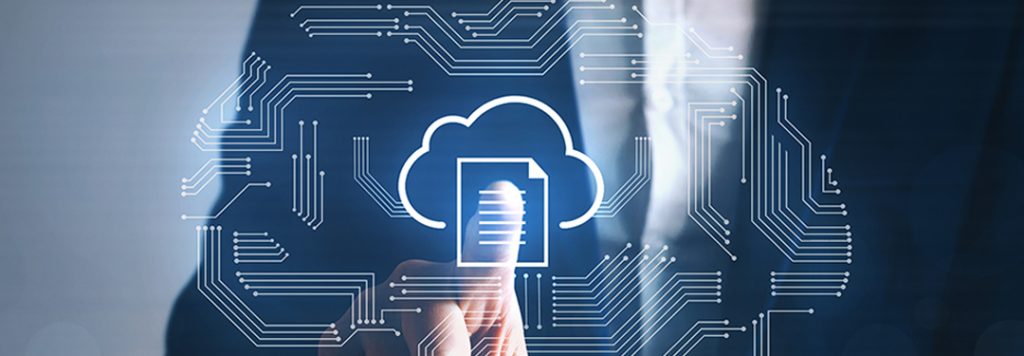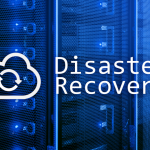Here in The Greater Los Angeles Area, we have certainly seen disasters like fires and earthquakes, but most of us have been fortunate that these events caused perhaps only temporary business interruptions, if that. There are very few members of IT Support Los Angeles community who have not had to respond to such catastrophes on behalf of their clients.
The COVID-19 pandemic and the ensuing lockdown have been devastating to businesses across the board and have prompted most companies to dig out old, dusty Emergency Business Continuity Plans – that is, if they even had a plan in the first place.
Unfortunately, this crisis has revealed how not just a few, but many IT services providers have been woefully unprepared for this massive Work From Home transition. Reconfiguring even a smaller network for multiple remote users while maintaining high security has severely taxed scores of ‘IT support guys’ who learned what they know on the fly and have not possessed a thorough knowledge of their craft.
THE SPOTLIGHT is now shining brightly on a simple question that very few business owners have tended to ask until now:

“How does my business become independent of environmental events?”
The ugly fact is that most businesses that are hit by a major disaster do not survive. Let IT Support LA show you that just because a disaster happened does not mean your business has to fall victim. Through our comprehensive planning and technology implementation we can ensure that you are ready to conquer any calamity. You will be protected by:
- Regular backups prepared
- Validation to ensure stability
- Scans using the latest in security software to check for integrity
- Multiple storage locations for the highest level of accessibility
- All with the push of a button
As a longtime Managed IT Services provider, IT Support LA offers turn-key solutions to protect the most valuable asset to your business, information. Do not let this single four syllable word make light of its weight. The reason one company soars and another falls might be as simple as knowing one extra piece of information. Once you have obtained that information, you’ll want to ensure its security for the life of your business. The loss of that data, even for a few days, can be devastating.
Our Backup and Disaster Recovery solutions go far beyond just storing your information on another location. We cover data validation, threat elimination, and prompt action no matter the situation. Fast, secure, and readily available are important factors when you are looking to have your business back up and running no matter what happens.
Having a solid Backup and Disaster Recovery Plan is crucial but is only part of an overall Business Continuity Plan. If your office just caught fire that the staff cannot douse without the Fire Department you have challenges that the best Cybersecurity and IT support cannot help you with, such as ushering employees to safety. So what happens now? You need to keep working! What if you could go to another office, turn on a computer, and you simply pick up where you left off? You wouldn’t even lose your missed calls. Does that sound like the kind of security you want to have for your business?
Ever wonder how much time it would take you to recover from a disaster?
Find out through our comprehensive ‘Down-time Calculator’ which will help you place a figure on the cost of not doing business and how cost effective our solutions can be for you.
Business Continuity Q & A
Q: What is a business continuity plan?
A: A business continuity plan (BCP) are the steps involved in ensuring a company’s ability to continue its standard operations during times of catastrophe. Laid out comprehensively in a document, it will go into great detail through checklists for each internal department as well as the company’s human resources, business partnerships, assets and on-hand physical resources – literally any and all aspects of the business that can be affected by any of various types of disasters.
Major disasters can be man-made, such as cyber-attacks or natural, such as fires, floods and earthquakes. However, a BCP should entail natural functions of the company which can affect business continuity, albeit it on a smaller scale. Office moves and even the massive migrations involved in moving from a local, physical network to cloud-based operations must be planned so as to not interrupt operations.
As a longtime member of the IT Support Los Angeles Community, IT Support LA, which provides Managed IT services, works with our clients on their BCPs – specifically as concerns their network infrastructure. While we may not be able to put out an actual fire, the overview of our IT support and services includes providing a comprehensive Backup and Disaster Recovery (BDR) plan, which exists as a stand-alone document as well as being included in the overall BCP.
Q: What is business continuity?
A: Simply put, it is the ability to continue doing business in the face of difficulties or a disaster which may cause a disruption. Depending on the nature of the disaster, different levels of disruption may occur.
If a local diner burns to the ground, there will most certainly be a lag before business can resume, but a fire in a business office may cause a momentary interruption as workers switch locations and the IT service sets up new computer hardware, retrieves data from a cloud backup (if the unconnected local backup is destroyed), reinstalls the data for the end user, and attends to the availability of peripheral devices such as printers, scanners and VoIP phones.
For a Managed Services Provider, maintaining the business continuity in terms of network operations is fairly cut and dried provided the IT services had all elements firmly in place before the disruption. A small amount of onsite tech IT support may be necessary as concerns the hardware, but all internal network functions can be easily handled by the remote IT HelpDesk.
The bottom line is to keep the business running and producing revenue, or to get the business back into operation as soon as possible.
Q: What does a business continuity plan typically include?
A: These are the key elements that MUST be realistically discussed and included in the BCP:
1) Threat Analysis: Take into account all manner of potential threats, from flood or fire, which may render your physical location to every possible type of cyber-attack. Whether it is a fire or a Ransomware attack, your IT Services people need to be involved from the start.
2) Responsibilities: Determining who will be responsible for what. There can be no confusion. When the ‘Battle Stations’ alarm is sounded on a Navy ship, everyone knows exactly where to go and who is in charge.
3) Emergency Contact Information: This should be explicitly required as part of any basic Employee Handbook. Emergency Contact info should be kept on several devices and in several forms. If the only place you keep yours is on a Post-A-Note stuck to your monitor, it won’t do you any good if the place burns down.
4) Off-site Backups: You must have your data backed up remotely, and test retrievals should be performed regularly. Your Managed Services Provider or even your IT Support ‘Guy’ should set this up for you immediately – if it is not in place already.
5) Communications: Once landlines or internet-dependent VoIP phones and emails are down, make sure that you have a plan in place to communicate through smart phones and other devices.
6) Dedicated Recovery Team: All integral departments; IT Support, HR, Communications and Security must be represented by a designated point person – the most expert in their field.
7) Backup Power: This may not be possible in every office location, but for a free-standing building, a generator system should be in place. It is advisable to lease office space in buildings with a backup power generation system.
8) Backup Site for Operations: If you cannot work in your building, you should have an alternate space in which to set up and conduct operations. More difficult for a manufacturer than a CPA, but have a ‘go-to’ spot for the administrative operations at a minimum.
9) Equipment and Services: Make sure you will have access to everything – phones, emails, computers and any other essentials that will keep you in operation.
10) Recovery: Just as your BCP must include executable measures for the emergency itself, you must have a plan for the quick, orderly return to ‘business as usual’ once the disaster is fully resolved.
Q: What is the primary goal of business continuity planning?
A: There is not just one, but in its most simplistic form, the goals are to maintain and resume business operations, then to fully recover from the emergency. The FDIC has a BCP Planning Booklet that is very detailed.
One excellent rule of thumb is that if you have an excellent BCP in place, with qualified and competent people running key areas, you should theoretically be able to continue operations, and ultimately recover from the disaster without discomfiting your clients at all – in fact, with a flawless plan, your customers may never know you experienced the disaster at all.
This may be tricky for some types of businesses, and truthfully, in the Managed IT Services field, Some forms of momentary disruptions, or ‘blips’ in their IT service may occur, as a power outage may reboot servers or workstations before the auxiliary power can kick in - but these events will be short-lived if they do happen.
Your New and Redefined IT Experience Begins with a FREE Consultation.
Give us a call or schedule online today!



